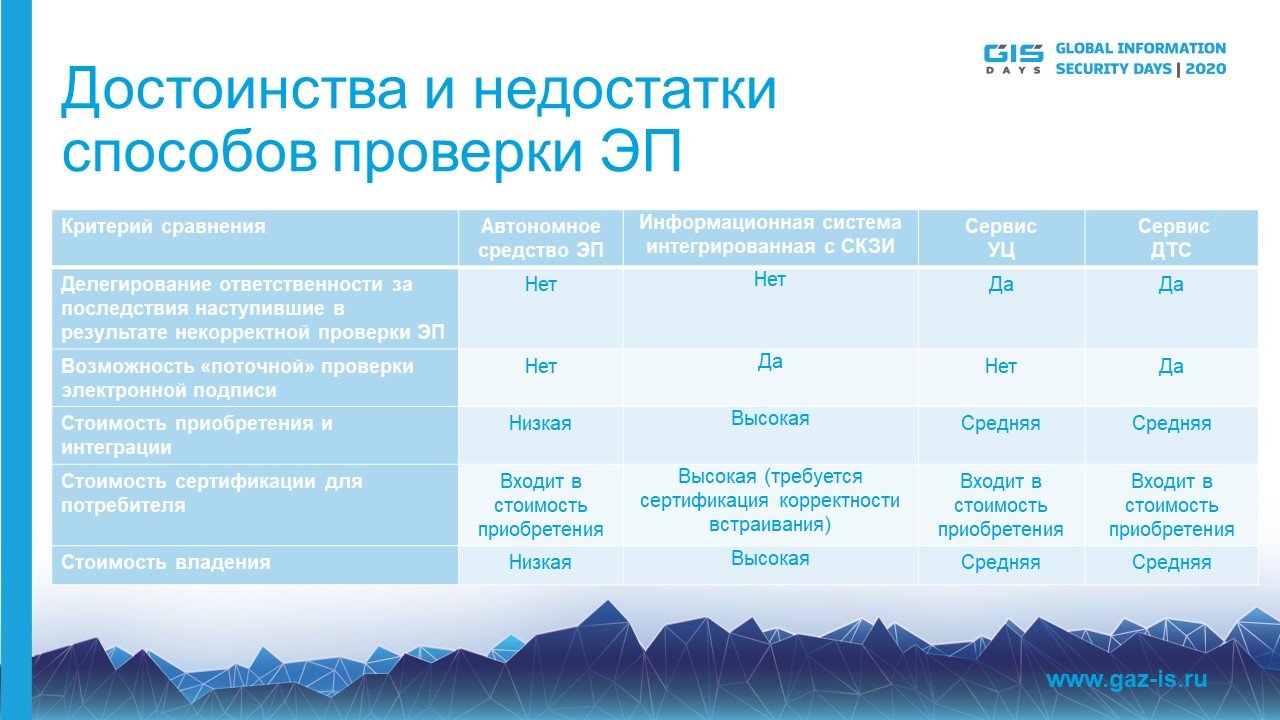The use of electronic signature (ES) today is caused by a number of factors, here are just a few of them: the need to speed up the process of signing documents, a remote format of work, ensuring the legal significance of electronic documents, as well as the need to control the integrity of information flows and authorship of documents of organizations.
To put this technology into practice, companies need to use correctly electronic signature tools, interaction with certification authorities and trust service providers, regulatory and organizational support. How to do this, we will tell you in our material.
RF legislation governing the use of electronic signatures
Changes in the legal framework that have occurred in recent years have given impetus to the development of cloud signature technology and trust services infrastructure. They contributed to the emergence of the necessary mature domestic products.
Sergei Kiryushkin, Advisor to the General Director of Gazinformservice, opening the session with a report on "Novels of Federal Law No. 63, new services based on public key infrastructure", noted the significant impact of innovations on the landscape of the domestic electronic signature market.
According to the speaker, since 2019, a number of amendments to the Federal Law No. 476 have been adopted, which have significantly changed the format of working with an electronic signature. The amendments led to the following innovations: a change in the accreditation period from 5 to 3 years; increasing requirements for own funds and financial responsibility of certification centers (CA); changing the procedure for servicing the CA clients; limiting the range of operators of accredited certification centers (ATC) for legal entities, public authorities and the credit and financial sector; the emergence of the concept of a trusted time stamp and the legalization of remote (cloud) electronic signature technology.
The amendments do not come into force at the same time, and significant changes await us in 2021 and 2022. The speaker paid special attention to those additions, the use of which will build in a new way the procedure for managing the powers of owners of electronic signature key certificates, as well as innovations that will finally consolidate such a phenomenon as the institution of a trusted third party (TTP).
Read more about the amendments, their significance in the formation of the TPA institute in Russia - here .
Cross-platform solutions for the correct work with electronic signature
Denis Sumak, lead manager - head of development at Gazinformservice, spoke about the place of cross-platform solutions in working with electronic signatures.
According to the speaker, it is precisely such solutions for electronic signature that will help ensure the smooth operation of public and private organizations on domestic systems that have a full range of technical support, have been certified, and work with national cryptographic algorithms.
Denis talked about the difficulties that the development team faced while creating the product, gave advice on what to consider when setting up the functioning of the digital signature tool.
Read more about this in the speaker's report - here .
However, if you do not need to develop such a system on your own, plunging into the specifics of its functioning, Gazinformservice already has a line of proprietary products ( Litoria Desktop 2 , Litoria Crypto Platform , Litoria DVCS ) that meet all legal requirements and provide high-quality and simple work with an electronic signature.
Electronic signature verification
Maria Dralo, head of the cryptographic protection group of the Gazinformservice company, spoke about the organization of electronic signature verification. In her opinion, this procedure ensures control of the integrity, authorship and guarantees the legal force of the document.
Today, users have access to several ways to check the electronic signature:
- using a local electronic signature tool;
- using the services of a trusted third party or certification authority;
- using an information system integrated with electronic signature facilities.
More details on the slide below.

Maria noted that it is the service of a trusted third party that can be the best solution for verifying signatures, especially when working with documents of companies operating in different countries.
Read more about the use of Litoria DVCS, when organizing a trusted third party service, as well as checking a foreign electronic signature using the example of a pilot project with the Republic of Belarus, here .
This material concludes a series of posts revealing the content of professional sessions of the GIS DAYS 2020 conference. Follow our news , do not forget to subscribe to the Gazinformservice YouTube channel and see you at GIS DAYS 2021.